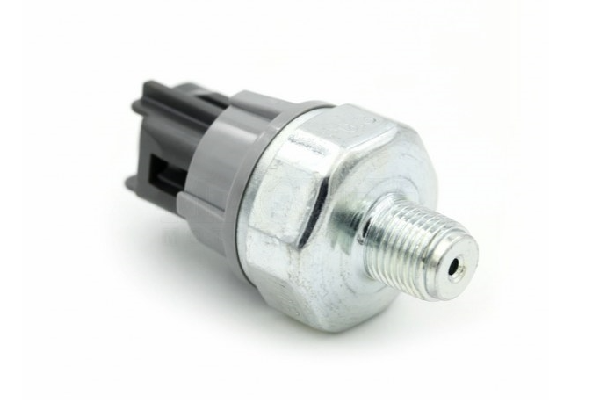A Brief Guide On Oil Pressure Switch, its Types & How to Test it

What Is An Oil Pressure Switch?
The purpose of an oil pressure switch in your vehicle is to monitor and indicate whether oil pressure is either low or high. The pressure switch either opens or closes, according to your vehicle's oil levels. In most vehicles, oil pressure is usually displayed at the dashboard indicating oil capacity.
Basic Oil Pressure Switch Guide.
Listed below are the three types of pin switches available. Switches available are designed as per vehicle specifications.
- One Pin Switch.
- Consists of two connections - one in the pin, while the other through the body of the engine's block.
- The connection that runs through the body - acts as an earth connection.
- There is a change of state in the pin, as the circuit is usually closed when the oil pressure is low.
This oil pressure switch is available in two types:
- 2 Pin Switch - One Pin As Ground.
- In this type of pressure switch the two pins are found on the pressure switch and the other through the engine's block.
- The connection running through acts as an earth connection.
- Without having to rely on ground the switch is run through both pins.
- 2 Pin Switch - One Pin Open, One Pin Closed.
- In this type of switch both pins are used for the same function, at different times.
- When the oil pressure becomes low, one pin will open while the other closes.
- When the oil pressure rises - the state of both pins change respectively. (when one is opened, one will close. This depends on whether the oil pressure is high or low).
- 3 Pin Switch.
- Exactly like a two pin oil pressure switch, a three pin switch also consists of two pins that change state according to oil pressure levels - a common connection is essential.
- A three pin switch is identifiable by its triangular socket, requiring a three pin electrical plug.
- One remains as ground, one pin usually open while the other usually closed.
Risk of A Faulty Pressure Switch.
Ignoring a faulty oil pressure switch is dangerous as it firstly prevents the driver from acknowledging necessary faults. This later can pose a threat to the engine and potentially the driver and vehicle.
As drivers it is important to keep in mind that our vehicles are mechanically equipped for the purpose of our safety and travels. Choosing to ignore small faults, unfortunately only leads to unnecessary wear and tear.
How to Test Your Oil Pressure Switch?
Listed below is a basic description on how testing is performed on the different types of switches.
One Pin Switch.
First set up your multimeter by attaching to the body of your pressure switch and the pin. One connection is the pin while the other is through the body- this connects to your engine's block.
Two Pin Switch - One Pin as Ground.
Connect your multimeter to the two pins of your oil pressure switch. Your oil pressure switch should open and close, according to your vehicle's engine whether switched off or on.
Two Pin Switch - One Pin Open, One Pin Closed.
When testing is performed one pin of your oil pressure switch will close when oil levels decrease, while the other opens. Upon oil pressure increasing, both pins will change states accordingly.
Three Pin Switch.
First start by identifying each pin by determining which pin is ground, opened pin and closed pin. Once this is confirmed, attach your multimeter to the opened and closed pins of the oil pressure switch. When the engine is switched off the circuit will remain closed, however when your engine runs, the circuit will close.
Should your vehicle's oil pressure switch become no longer functional without indicating sounds of fault- always troubleshoot before performing replacements. Test parts that may indicate fault thoroughly, to avoid spending unnecessary amounts of time and money.
Alternatively, if you find yourself in the position with a faulty part, rather visit AfricaBoyz Online to view affordable prices and the exact part specifications. Tools that are required to perform testing are available, speak to one of our friendly professionals today for all mechanical queries.
